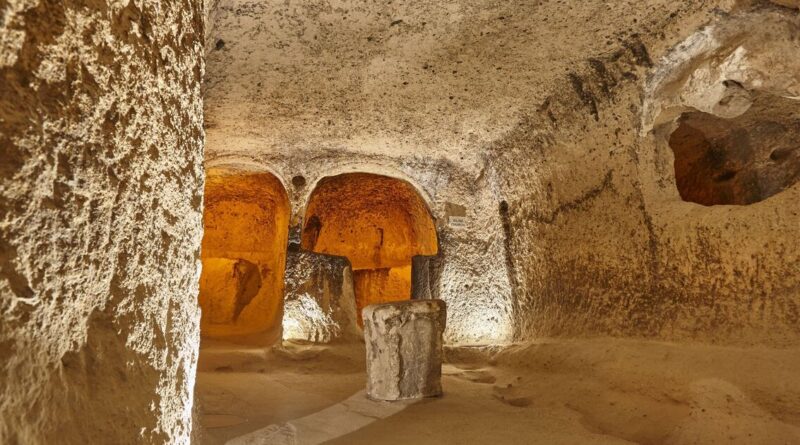Inside the world’s biggest underground city once home to 20k people | World | News
A once bustling hub of life home to thousands of people, a secret underground metropolis that stretches an incredible 85 metres below the Earth’s surface now lies completely abandoned.
Originally known as Elengubu, the ancient city of Derinkuyu in Turkey stretches across 18 levels of tunnels underneath the overground city of the same name – making it the largest excavated underground city in the world.
For thousands of years, Derinkuyu could support around 20,000 people for months at a time in numerous cave-like rooms.
While it is not entirely clear when each room was built, it is thought that work first began as far back as the 8th to 7th centuries BC.
Over the course of its history, it changed hands multiple times, from the Phrygians—ancient Indo-European-speaking people—to the Persians and Christians of the Byzantine Era. Then, in the 1920s, it was abandoned by the Cappadocian Greeks, who fled to Greece after being defeated during the Greco-Turkish war.
The city then remained hidden for around 40 years until a man knocked down a wall in his home and found a tunnel in 1963.
That tunnel was found to lead to others, which eventually connected a multitude of halls and chambers.
The inner layers are said to have included cellars, school rooms, refectories, chapels, and meeting places. A complex ventilation system was discovered that enabled inhabitants to stay underground for months at a time, with clean air and water.
In fact, more than 200 similar underground cities have been discovered in the region of Turkey. These may be connected to the tunnels of Derinkuyu, creating a huge network. None of them, however, matches the size and intricacy of Derinkuyu.
The underground tunnels did not only house humans – livestock were also kept near the surface to reduce the smell and all the methane and nitrous oxide gases to escape.
In 1985, the city gained a UNESCO World Heritage Status.
Today, Derinkuyu stands mostly empty, apart from the few tourists who are brave enough to take guided tours through the narrow tunnels which visitors must walk through single-file and stooped over.
Not all of Cappadocia’s subterranean secrets have been fully excavated, but by 2016, around 50% of the city had become accessible.
Other destinations to explore nearby include the Red Valley, where tourists can go hiking, and the Zelve Open Air Museum, a scenic open-air museum with cave homes that are available to explore.





